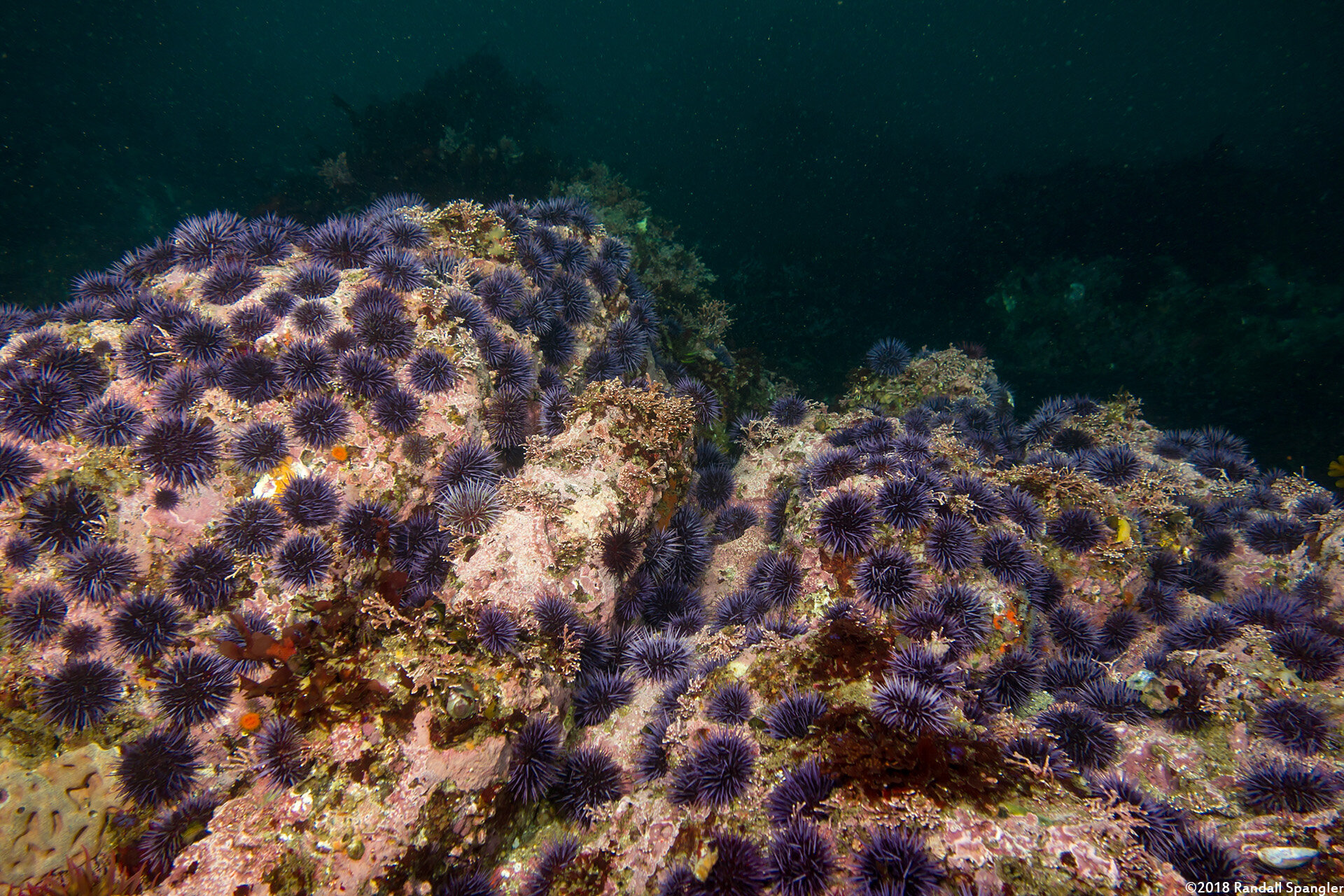Purple Sea Urchin
Strongylocentrotus purpuratus
Written by Fin + Forage’s Environmental Scientist, Ariella Simke
Fish Images by Randall Spangler
The purple sea urchin has garnered significant notoriety in the past decade along the west coast due to its role in the disappearance of kelp along the west coast of the United States and in other parts of the world. Purple urchin population levels are exploding because their primary predator, the sunflower star, was wiped out due to climate-change-related marine heatwaves. The urchins have destroyed about 90% of California’s kelp forests in less than a decade.
A common misconception is that these animals are invasive, however they are a native species that has overpopulated. Sea urchins are echinoderms- similar to sea stars, sea cucumbers and sand dollars (and all of these are invertebrates). They have a hard ‘test’ covered in purple spines, and move via tube feet. They consume algae of all sorts, most notably kelp, and live in the intertidal and subtidal. They can be found covering rocks by the thousands in ‘urchin barrens’- areas where the urchins have eaten all the kelp, resulting in tons of urchins and not many other species.
Urchins are prized for their delicious “roe”, the orange tongue-like reproductive organs inside their shell. Roe is commonly used in sushi. However, urchins collected from urchin barrens may be starved due to the lack of kelp, and may be empty inside.
Collecting purple urchins is not hard, but it can be restricted or illegal, check local regulations before taking them. Local efforts are underway to petition the government to allow for urchin culling to tackle the issue of urchin barrens as well. To collect, simply pluck urchins from the rocks using (gloved) hands or a stick. The spines can pierce skin, so handle gingerly.
Predators include sea otters and sheephead, which is why many spearfishers choose not to hunt sheephead.

